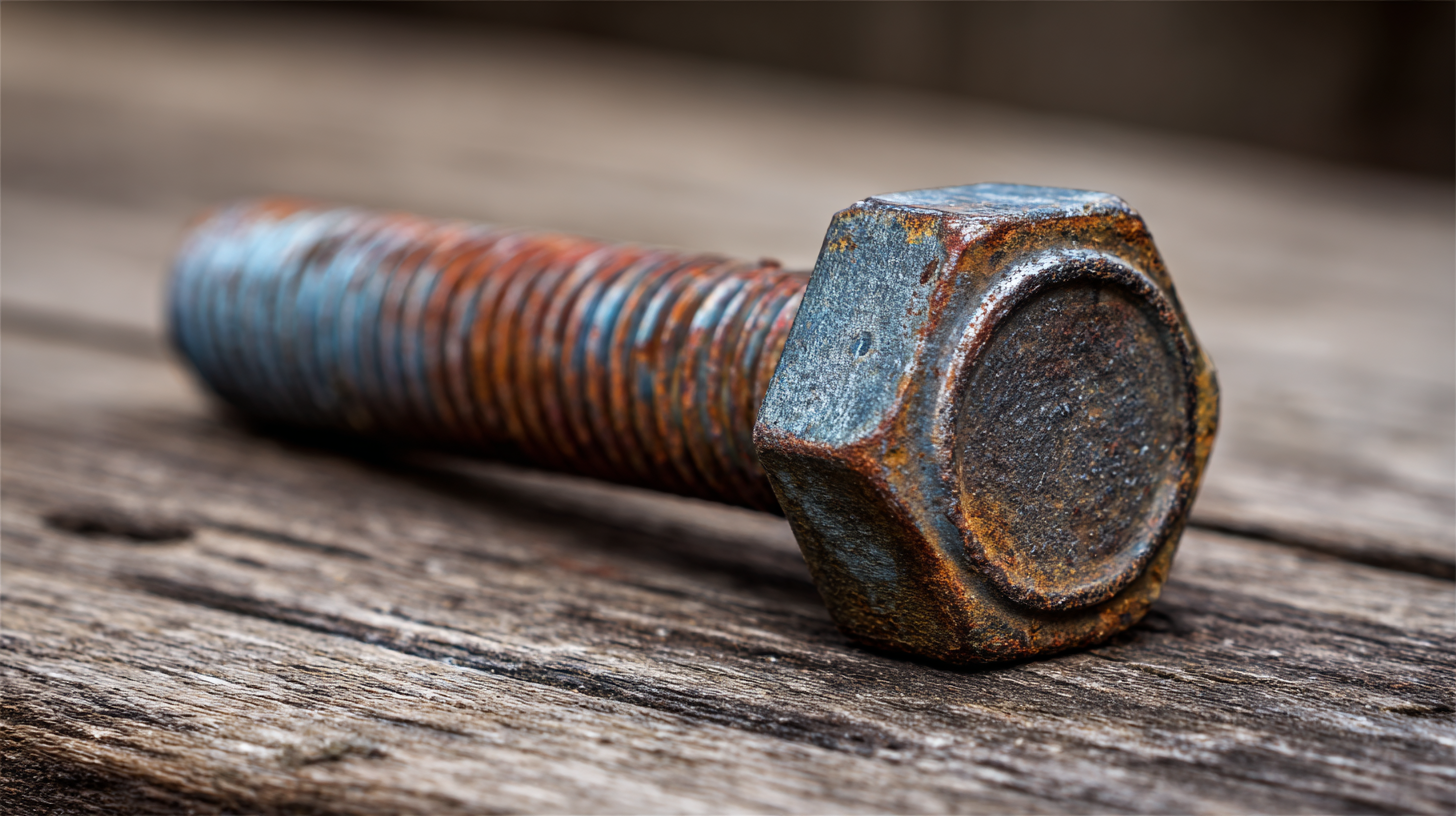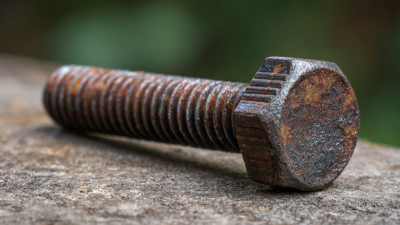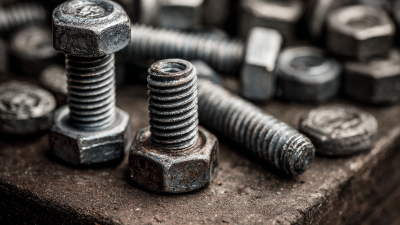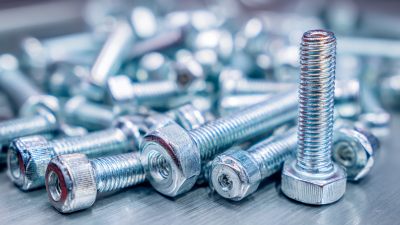Understanding the Versatility of Carriage Bolts: Essential Guide for DIY Enthusiasts
In the world of DIY projects, understanding the components that contribute to structural integrity is crucial. Among these essentials, the carriage bolt stands out for its versatility and reliability. According to a report by the Home Improvement Research Institute, the global market for fasteners is expected to reach USD 30 billion by 2025, driven largely by home renovation and construction activities. Carriage bolts, with their unique rounded heads and square necks, make them ideal for securing wooden structures, such as furniture and decks, ensuring both stability and aesthetic appeal. Their ability to distribute weight effectively lends itself to various applications, making them a favorite among DIY enthusiasts and professionals alike. This guide will delve into the myriad uses of carriage bolts, equipping you with valuable tips and techniques to leverage their full potential in your projects.

The Anatomy of Carriage Bolts: Components and Functions
Carriage bolts are unique fasteners designed primarily for wood applications, featuring a round head and a square neck that prevents the bolts from turning when tightened. Their construction typically includes a smooth, dome-shaped top and a threaded shaft, making them ideal for various projects. A report by the Fastener Industry Association indicates that carriage bolts have consistently gained popularity in outdoor furniture and construction due to their durability and resistance to shear forces.
When utilizing carriage bolts, it’s essential to understand their components to maximize their effectiveness. The square neck serves as a lock, ensuring the bolt remains securely in place when tightened. This design prevents spinning during installation, making them preferable for securing wood pieces together. For DIY enthusiasts, choosing the correct size and length of the bolt is crucial to ensure structural integrity and stability in your projects.
**Tips:** Always pre-drill a hole slightly larger than the carriage bolt's diameter to facilitate easier installation. When working with multiple bolts, maintain a consistent spacing measurement to achieve a polished look and enhance the structural strength of your work. Additionally, consider using weather-resistant materials for outdoor projects to extend the lifespan of your installations.
Selecting the Right Carriage Bolt for Your Project
When embarking on a DIY project, selecting the right carriage bolt is crucial for ensuring stability and durability.
Carriage bolts are characterized by their rounded heads and square necks, which prevent them from turning once installed. Depending on the specific requirements of your project, you’ll need to consider factors such as
material,
size,
and
finish.
For outdoor projects, corrosion-resistant materials like stainless steel or galvanized steel are ideal, as they withstand the elements better than standard steel.
Additionally, the size of the carriage bolt should match the application. You should measure the thickness of the materials you plan to join and choose a bolt length that provides enough grip without excessive protrusion.
Pay attention to the diameter as well; a larger diameter correlates with increased strength but may require larger pre-drilled holes.
Lastly, consider the finish of the bolt—whether you prefer a shiny look or a more subdued appearance, the finish can affect both aesthetics and protection against rust.
By understanding these key factors, you can select the perfect carriage bolt to enhance the quality and longevity of your DIY project.

Step-by-Step Guide: How to Install Carriage Bolts Properly
When it comes to DIY projects, proper installation of carriage bolts can make a significant difference in the strength and durability of your build. Carriage bolts, characterized by their rounded heads and square necks, are designed to resist turning during installation. To begin the installation process, ensure that you have the right tools on hand: a drill, a wrench, and of course, the carriage bolts themselves. Start by marking the location where the bolts will be inserted. Drill a hole that matches the diameter of the bolt, ensuring it goes through both pieces of material you’re connecting.
**Tip:** When choosing the size of your carriage bolt, consider that they are typically available in lengths ranging from 1 inch to 12 inches. Select a size that provides adequate strength for your specific application.
Once the hole is drilled, insert the carriage bolt through the hole with the square neck resting in the pre-drilled square cutout, if available. Tighten the nut securely with a wrench, but be careful not to overtighten, as this could damage the material.
**Tip:** For added stability and to prevent rusting, consider using a washer under the nut, particularly in outdoor applications. Regularly inspect your installations to ensure everything remains secure over time.
Carriage Bolt Installation Usage Statistics
Creative Uses of Carriage Bolts in DIY Projects
Carriage bolts are often underestimated tools that can significantly enhance your DIY projects. Their unique design makes them ideal for connecting wood pieces, but their versatility extends far beyond that. For instance, they can be used to create sturdy furniture, such as benches and tables, where the aesthetic appeal of their rounded head can add a touch of style. Moreover, combining carriage bolts with timber sleepers allows for creative and resilient outdoor structures, making your garden or patio a favorite gathering place.
Besides structural applications, innovative uses of carriage bolts include crafting decorative items or securing pergolas and trellises. Their ability to provide a strong hold without the need for a nut on the opposite side can streamline the assembly process in various projects. When paired with techniques like impact driving for loosening screws or utilizing bench vises for precision, carriage bolts can elevate both the functionality and visual appeal of your creations. Whether you're starting out with basic projects or embarking on more advanced endeavors, incorporating carriage bolts into your toolkit is a smart move that opens up endless possibilities.

Maintenance Tips: Keeping Your Carriage Bolts Secure and Functional
Carriage bolts are an essential component in many DIY projects, providing both strength and stability. To ensure that your carriage bolts remain secure and functional over time, it’s important to follow a few maintenance tips. Regular inspections should be conducted to identify any signs of corrosion or wear. If you notice any rust, it’s crucial to clean the bolts thoroughly, applying a rust remover followed by a protective coating to prevent future deterioration.
Another key aspect of maintaining carriage bolts is checking the tightness of the nuts and washers. Over time, vibrations and changes in temperature can cause them to loosen. Using a torque wrench to ensure they are tightened to the appropriate specifications can help maintain their integrity. Additionally, applying a lubricant periodically can reduce friction and wear, making it easier to adjust them when necessary. Following these simple maintenance practices will help keep your carriage bolts in optimal condition, ensuring that your projects remain sturdy and reliable for years to come.
Understanding the Versatility of Carriage Bolts: Essential Guide for DIY Enthusiasts
| Dimension | Description | Maintenance Tip |
|---|---|---|
| Length | Available in various lengths (from 1 inch to 12 inches) | Ensure bolts are not over-tightened to prevent stripping. |
| Diameter | Commonly sizes include 1/4", 3/8", and 1/2" | Use a wrench that fits snugly to prevent rounding off the head. |
| Material | Typically made from steel or stainless steel for durability | Inspect for rust regularly, especially in outdoor applications. |
| Coating | Available with zinc or black oxide finishes for added protection | Reapply a protective coating if wear is visible. |
| Application | Used in wood and metal constructions for secure fastening | Check for tightness regularly to prevent loosening. |
Related Posts
-

Understanding the Importance of Carriage Bolt Selection in Construction Projects
-

How to Choose the Right Carriage Bolt for Your Next Project
-

Ultimate Guide to Choosing the Right Hot Sale Carriage Bolt for Your Projects
-

5 Essential Tips for Choosing the Right Truss Head Carriage Bolt for Your Project
-

Innovative Trends in Truss Head Carriage Bolt Industry at 2025 China Import and Export Fair
-

How to Select the Perfect Button Head Bolt for Optimal Load Distribution in Your Projects
